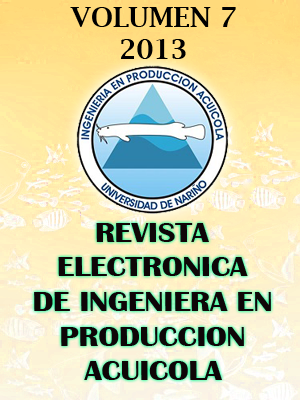Experiencias en el manejo del Chame (Dormitator latifrons) en la Cuenca del Río Guayas, Ecuador
Resumen
Dormitator Latifrons, conocido en nuestro medio como Chame, cuya distribución es desde el Sur de California hasta el norte del Perú, este pez en comparación con otras especies acuáticas cultivables, tiene la característica de sobrevivir variaciones abióticas (salinidad, temperatura) y especialmente una conversión alimenticia que le permite ganar peso en menor tiempo con respecto a otros peces, lo que convierte al chame en una alternativa de grandes divisas para el país. En investigaciones sobre el manejo del Chame en la cuenca del Río Guayas, desde 1979, visité áreas naturales para conocer los diferentes aspectos bióticos y abióticos de su reproducción, obteniendo datos de salinidad, temperatura, comportamiento y estructuras de los lugares de reproducción de esta especie, para posteriormente aplicar estos conocimientos en piscinas de reproducción. En las piscinas de reproducción del chame, apliqué construcciones de estanques basados en las áreas naturales visitadas, seleccioné reproductores con un peso adecuado y añadí técnicas de hipofisación, que permitieron reproducción en cautiverio, dando como resultado alevines de buena calidad. En cuanto a investigaciones sobre la alimentación del chame, realicé análisis del contenido estomacal de ejemplares de diferentes procedencias y posteriormente evalué una fórmula con productos naturales que permitieron abaratar los costos de producción del Chame. Como catedrático de Patología Acuícola, durante 29 años, he examinado peces enfermos para diagnosticar el agente patógeno que afectan a D. latifrons en cautiverio a fin de aplicar las medidas profilácticas o tratamientos respectivos.
Palabras clave: Chame, Dormitator latifrons, Reproducción del Chame, Enfermedades del Chame, Alimentación del Chame.
Summary
Dormitator Latifrons, known in our way like Chame, whose distribution is from the South of California up to the north of Peru, this fish in comparison with other cultivable species, has the characteristic of surviving variations abióticas (salinity, temperature) and specially a food conversion that allows him to gain weight in minor time with regard to other fish, which turns the chame into an alternative of big currencies for the country. In investigations on the managing of the Chame in the basin of the Rio Guayas, from 1979, I visited natural areas to know the different biotic aspects and abióticos of his reproduction, obtaining information of salinity, temperature, behavior and structures of the places of reproduction of this species, later to apply this knowledge in swimming pools of reproduction. In the swimming pools of reproduction of the chame, I applied constructions of reservoirs based on the natural visited areas, selected breeding animals with a suitable weight and added technologies of hipofisación, that allowed reproduction in captivity, giving like proved fries of good quality. As for investigations on the supply of the chame, I realized analysis of the stomach content of copies of different origins and later I evaluated a formula with natural products that allowed to cheapen the costs of production of the Chame. As professor of Aquicultural Pathology, for 29 years, I have examined sick fish to diagnose the pathogenic agent that they affect to D. latifrons in captivity in order to apply the prophylactic measures or respective treatments.
Key words: Chame, Dormitator latifrons, Reproduction of the Chame, Diseases of the Chame, Supply of the Chame.

